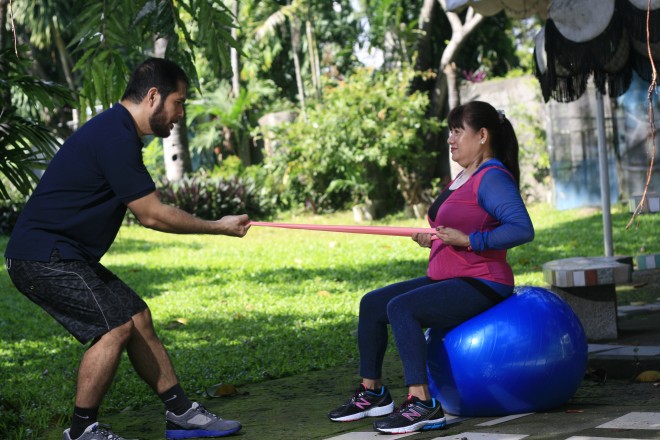
You begin to lose muscle mass and function at age 30 onwards, and 3-5 percent of muscle mass per decade thereafter if you’re inactive. And even if you are physically active, you will still experience some muscle loss.
Aging, unfortunately, is inevitable, and along with it comes the degenerative loss of skeletal muscle called sarcopenia. Studies show that other factors linked to sarcopenia include neurodegenerative diseases, decreased hormone levels, decreased ability of the body to synthesize protein and suboptimal nutrition malabsorption. These are the changes that occur as the body ages.
The good news is, sarcopenia is manageable, reversible and may even be preventable. Its primary treatment: exercise.
A specific type of exercise called progressive resistance training program has been observed to increase protein synthesis rates in older adults in as little as two weeks. It is essential that a continuous repair of protein quality and quantity be maintained throughout a person’s senior years to prevent muscle mass loss. That involves protein breakdown and synthesis.
During biceps curls, for example, muscles are broken down and then later on repaired to make them stronger. The goal is to keep them and make them stronger, not to join the next Mister Universe.
“Senior Fitness is a resistance training program for the elderly so that they can enjoy life more. In human longevity, one must be able to enjoy life to be able to live fully. It’s never too late to start exercising,” said instructor Sonny Orallo.
Age is just a number
Orallo, a certified personal trainer for more than 20 years, decided to specialize in senior fitness more than a year ago when his parents, both in their 70s, flew in from the United States for a vacation in Manila. While both were still quite active for their age, he noticed his parents seemed to have “slowed down” since he last saw them.
The problem with many Filipinos, Orallo said, is that we treat old people like old people. When they begin to physically deteriorate, we accept it as part of growing old. For example, a grandparent who experiences low back pain when he tries to lift his granddaughter from the floor, will simply dismiss it as a case of “matanda na kasi.”
The truth is, a weak core muscle group triggered the grandparent’s low back pain. A good resistance training program could have prevented it.
Research made 15 years ago showed that progressive resistance training increased protein synthesis rate in just two weeks, up to 182 percent from baseline in seven seniors aged 78 to 84.
Resistance training increases bone mass, making it a good exercise choice for postmenopausal ladies as well. It enhances flexibility, mobility and balance, thus improving posture, reflex, coordination and reducing the risk of falls. It also helps alleviate symptoms of illnesses and chronic diseases such as arthritis.
With continued exercise, the elderly will experience improved metabolism, healthy heart, lower blood pressure, good immune system and lowered risk for certain medical conditions such as obesity, diabetes, osteoporosis. Sleep will also improve, as well as mood and self-confidence.
Gym at home
Since most of the elderly refuse to step inside a gym for different reasons, Orallo brings the gym to their homes. He has weights, resistance bands, kettlebells, agility ladder for lateral movement, footwork and agility drills, Plyo box for step ups, cones, hoops, TRX and medicine balls.
He monitors their blood pressure and even brings a Polar heart rate monitor, although clients end up buying their own eventually. Intensity and frequency, in cycles of highs and lows, are relative to a person’s fitness level. What is strenuous for a 70-year-old, for example, may be a walk in the park for a 20-year-old, but the benefits both will get from the exercise routine will be the same.
A session varies from 45 minutes to an hour, including stretching, warm up and cool down. Rest interval may be longer for some.
“I’m careful not to have them experience too much soreness,” said Orallo. “That’s why I tell them ahead of time not to worry when they feel soreness since it’s just temporary. There’s really a lot of consideration when designing an exercise program. Muscle recovery is slower as one gets older.”
Constant training can also mean reclaiming their independence, Orallo noted. Day-to-day activities become less and less of a chore. They can dress on their own, get in and out of cars unaided, cross the street with greater speed, walk longer, tie their own shoes, play with the grandkids.
For more information, call or text 0917-8770667 or check out Senior Fitness here.